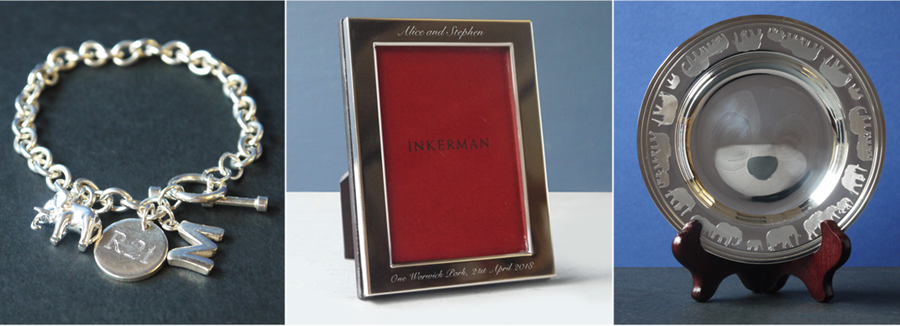How you can tell the difference between silver plate and sterling silver...
Solid silver is also known as sterling silver and is valued as a precious metal. Silver is found in the Earth's crust in its pure form which is known as "native silver" and is mostly found as a by-product of mining for other metals including copper, gold, lead and zinc.
Silver is a soft metal which is used to make jewellery and objects. Due to its softness, it is often mixed with a small amount of another metal to make it more durable and lasting, and in most cases, sterling silver is composed of 7.5% copper. For an item to qualify as solid silver, it must be 92.5% pure silver.
Silver plate is a term used when jewellery or other products are primarily made of other metals and coated with a thin layer of silver; the base metal is oftern brass. The item is made in brass and then dipped in a silver solution giving the item a silver appearance. As the silver is a coating it can be thin and is susceptible to fade over time, with both wear and tear and occasionally over-polishing. Silver plate items will not have a 925 stamp or a hallmark.
What is a hallmark?
A hallmark is a mark stamped on articles of gold, silver or platinum by the British Assay Offices certifying their standard of purity. The components of a hallmark are: the makers' mark, the standard mark, the assay office mark and the date for the year it was made. So, covering where & when the item was made, by whom and where was it assayed. The date letter has become optional in recent years.
There are four Assay Offices in the UK; London, Birmingham, Sheffield and Edinburgh, and all are overseen by the British Hallmarking Council. The Goldsmiths’ Company Assay Office in London began hallmarking in the 1320’s and is the oldest UK Assay office.
The Sterling Silver Hallmark
The Sponsor’s Mark – consists of at least two letters within a shield, no two marks are the same.
The Purity Mark – indicates the precious metal content of the product. E.g. 925 parts per 1000 is sterling silver.
The Assay Office Mark – identifies which office tested and hallmarked the product. There are British Assay Offices.
The Date Mark – denotes the year of hallmarking.
Sterling Silver or Silver Plate: How do you tell?
Carefully inspect your item for a sterling silver mark; this may be in the form of a 925 stamp or a hallmark. If you are looking at jewellery, check the clasp. You should see one of the following markings or something similar: "9.25," "925/1000," "Sterling," "S/S" or "Sterling 9.25." If you do not see any of these markings, it's highly unlikely the item is genuine silver.
If you do not see the sterling marking, the item is probably silver plated. Check the colouring of the item carefully; genuine silver is generally less shiny and colder in tone than silverplate. If you see places where the silver appears to be flaking off or turning green, the item is silver plated.
To investigate further, you can try cleaning the item with a soft cloth. Real silver will oxidize with friction and as a result, usually leave black marks on the cloth. Exposure to air or other chemicals results in tarnishing that does not occur with fake silver.
Sterling silver will tarnish over time and should be polished with a soft cloth using a silver cleaner.
Inkerman are suppliers of sterling silver and silver plate products, we are not able to offer valuations of silver products.










































